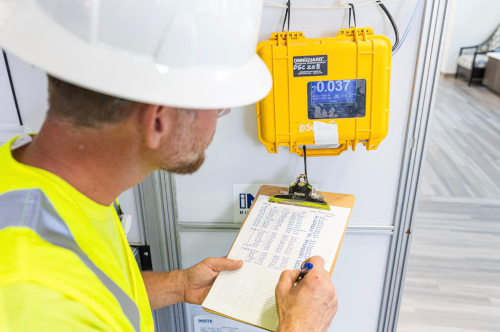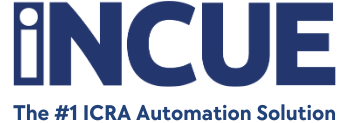
In the realm of healthcare construction, where the well-being of patients is paramount, the stakes couldn’t be higher when it comes to infection prevention. As construction managers, you understand the critical importance of adhering to standards like the Infection Control Risk Assessment (ICRA) in ensuring that construction activities don’t compromise the safety of patients and staff. However, it’s time to acknowledge that the current methods prescribed by the ICRA standard are falling short in keeping pace with modern advancements. In particular, the manual tracking of containment breaches and differential pressure monitoring, while once considered the gold standard, are proving to be inadequate and outdated in today’s fast-paced digital era.
Let’s delve into the shortcomings of the existing ICRA standard and explore innovative solutions that can revolutionize infection prevention efforts in healthcare construction projects.
The Limitations of the ICRA Standard:
While the ICRA standard provides essential guidelines for minimizing infection risks during construction in healthcare facilities, it lacks provisions for real-time monitoring and automatic capture of potentially hazardous containment breaches. Traditionally, construction managers have relied on manual methods for tracking containment zones and ensuring appropriate air pressure differentials to prevent the spread of contaminants. However, this approach is inherently flawed for several reasons:
- Subjectivity and Human Error: Manual tracking of containment breaches is susceptible to human error and interpretation biases. Even with the most diligent efforts, there’s a risk of oversight or misinterpretation, leading to undetected breaches that could compromise patient safety.
- Limited Timeliness: Manual monitoring is inherently limited by its intermittent nature. Construction sites are dynamic environments where conditions can change rapidly. Relying on periodic checks leaves room for potential breaches to go unnoticed for extended periods, increasing the risk of infections.
- Lack of Accountability: In the event of a containment breach, manual tracking makes it challenging to pinpoint the exact cause or source in real-time. This lack of accountability hampers efforts to implement corrective measures promptly, potentially exacerbating the risk of further contamination.
Embracing Innovation:
To address these challenges and usher in a new era of infection prevention in healthcare construction, it’s imperative to embrace modern technologies that offer continuous, real-time monitoring of environmental conditions. By leveraging innovative solutions, construction managers can enhance their ability to detect and respond to containment breaches swiftly, thereby safeguarding the health and well-being of patients and staff.
Continuous Air Pressure and Quality Monitoring:
One promising solution lies in the adoption of advanced monitoring systems that provide continuous surveillance of air pressure differentials and air quality within construction zones. These systems utilize state-of-the-art sensors and IoT (Internet of Things) technology to monitor parameters such as air pressure, temperature, humidity, and particle levels in real-time.
Benefits of Real-Time Monitoring Systems:
- Early Detection of Breaches: By continuously monitoring air pressure differentials, these systems can instantly detect any deviations from the prescribed levels, signaling a potential containment breach. This proactive approach enables construction teams to take immediate corrective action, mitigating the risk of contamination.
- Data-Driven Insights: Real-time monitoring systems collect vast amounts of data on environmental conditions, providing construction managers with valuable insights into trends and patterns. By analyzing this data, teams can identify areas of improvement, optimize construction practices, and ensure compliance with infection control protocols.
- Enhanced Transparency and Accountability: With digital capture capabilities, real-time monitoring systems offer unprecedented transparency and accountability. In the event of a breach, detailed logs and alerts provide clear documentation of the incident, enabling swift corrective action and accountability measures.
Conclusion:
Infection prevention is a non-negotiable priority in healthcare construction, and it’s time to elevate our efforts to meet the demands of the modern era. The antiquated methods prescribed by the ICRA standard are no longer sufficient in today’s digital age, where real-time monitoring and data-driven insights are essential for ensuring patient safety.
By embracing innovative solutions for continuous air pressure and quality monitoring, construction managers can enhance their ability to detect, prevent, and respond to containment breaches effectively. Investing in modernization isn’t just about compliance; it’s about safeguarding the health and well-being of those who depend on us most—our patients.
Together, let’s pave the way for a future where infection prevention in healthcare construction is not just a standard to meet but a commitment to excellence and safety.
